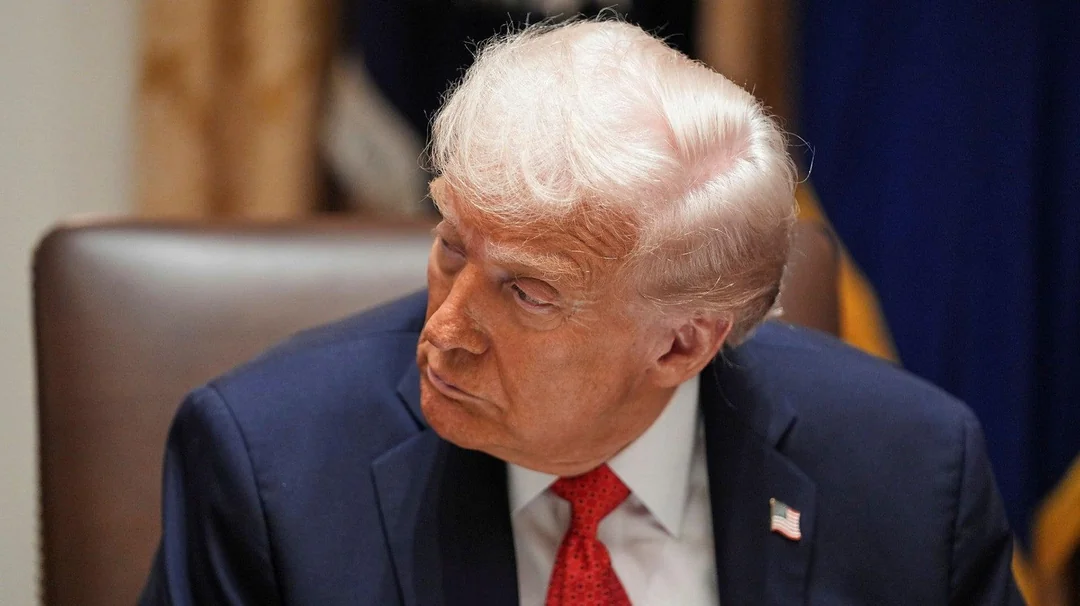The International Monetary Fund (IMF) today delivered a cautiously optimistic update to its global economic outlook, projecting revised growth rates of 3.0% for 2025 and 3.1% for 2026. This marks an upward revision from its previous forecasts in the April 2025 World Economic Outlook (WEO), signaling a more favorable, albeit still fragile, global economic environment. The 2025 forecast saw a notable increase of 0.2 percentage points, while the 2026 outlook climbed by 0.1 percentage points.
The revised projections come as welcome news in a global economy that has navigated a complex period of high inflation, supply chain disruptions, and geopolitical uncertainties. According to Pierre-Olivier Gourinchas, the IMF’s Chief Economist, the upward revisions reflect a combination of positive developments, including “stronger than expected front loading, lower tariff rates compared to early April, easier financial conditions, including a weaker US dollar and fiscal expansion in some jurisdictions.” While these factors offer a glimmer of hope, Gourinchas was quick to temper expectations, noting that projections still remain about 0.2 percentage points below the IMF’s pre-April 2nd forecasts, a clear indication that lingering trade tensions continue to exert a drag on the global economy. Encouragingly, global inflation is also projected to continue its downward trend, reaching 4.2 percent in 2025 and further easing to 3.6 percent in 2026.
Understanding the IMF and its World Economic Outlook
To fully appreciate the significance of this announcement, it’s important to understand the role of the International Monetary Fund (IMF) and its flagship publication, the World Economic Outlook. The IMF is an international organization, headquartered in Washington, D.C., comprising 190 member countries. Its primary mission is to foster global monetary cooperation, secure financial stability, facilitate international trade, promote high employment and sustainable economic growth, and reduce poverty around the world. The IMF achieves this through three main functions: monitoring the global economy and member countries’ economies, providing financial assistance to countries in need, and offering technical assistance and training.
The World Economic Outlook (WEO) is a comprehensive report published by the IMF typically twice a year, in April and October, with analytical chapters and updates released in between. It provides the IMF’s analysis and forecasts for the global economy and individual countries. The WEO is widely regarded as a benchmark for global economic analysis, offering insights into key economic trends, risks, and policy recommendations. Its forecasts are closely watched by governments, financial markets, and businesses worldwide, as they inform strategic planning and investment decisions. The current update reflects the IMF’s latest assessment based on incoming economic data and evolving global conditions since the full April report.
Driving the Revisions: Key Factors at Play
The IMF’s decision to revise its growth forecasts upwards is driven by several interconnected factors that have created a more conducive environment for economic activity.
Easing Trade Tensions and Lower Tariffs
One of the most impactful developments cited by Gourinchas is the “lower tariff rates compared to early April.” This suggests a discernible shift in global trade dynamics, possibly stemming from de-escalation in trade disputes or the successful conclusion of certain trade negotiations. For years, escalating trade tensions, particularly between major economic blocs, have cast a long shadow over global growth prospects. Tariffs, essentially taxes on imported goods, increase costs for businesses and consumers, disrupt global supply chains, and create uncertainty that deters investment.
A reduction in these trade barriers, even if incremental, can significantly reduce economic friction. It allows goods and services to flow more freely, lowers input costs for manufacturers, and can lead to more competitive pricing for consumers. This “front loading” of economic activity, as Gourinchas describes it, implies that businesses and consumers are responding positively to the improved trade climate, bringing forward investment and consumption decisions that might have been postponed due to uncertainty. While the full impact of past trade tensions is still being felt, any move towards more predictable and open trade policies is a net positive for global economic expansion.
Easier Financial Conditions and a Weaker US Dollar
Another crucial element contributing to the revised outlook is “easier financial conditions, including a weaker US dollar.” Financial conditions refer to the availability and cost of financing for businesses and consumers. When financial conditions ease, it generally means that borrowing costs are lower, credit is more readily available, and asset prices (like stocks and bonds) are supportive of economic activity. This can be influenced by central bank policies, investor sentiment, and global capital flows.
A weaker US dollar plays a significant role in this dynamic. For countries that have borrowed in US dollars, a weaker dollar makes their debt repayments cheaper when converted back into their local currency, easing fiscal burdens. It also makes imports into the U.S. more expensive, while making U.S. exports more competitive on the global market, potentially boosting demand for American goods and services. For emerging markets, a weaker dollar can reduce capital outflows and make it easier to attract foreign investment, contributing to greater financial stability and growth. This easing of financial conditions encourages investment, stimulates consumption, and can provide a much-needed tailwind for economic expansion globally.
Targeted Fiscal Expansion
The mention of “fiscal expansion in some jurisdictions” points to governments actively stimulating their economies through increased spending or tax cuts. While the IMF typically advocates for fiscal prudence, targeted fiscal measures can provide a necessary boost to demand, especially in economies still recovering from shocks or facing specific challenges. This could involve investments in infrastructure, support for specific industries, or direct aid to households, all aimed at bolstering economic activity. The effectiveness and sustainability of such measures depend heavily on the specific context of each country, including its fiscal space and debt levels. However, in the short term, well-designed fiscal expansion can contribute to stronger growth outcomes.
Persistent Downside Risks: A Call for Vigilance
Despite the upward revisions, the IMF’s Chief Economist, Pierre-Olivier Gourinchas, stressed that “overall, risks to the outlook remain tilted to the downside, as in the April WEO.” This cautious stance highlights several enduring vulnerabilities that could derail the global recovery.
Renewed Protectionism and Trade Talk Breakdowns
The most prominent downside risk remains the potential for a “breakdown in trade talks or renewed protectionism.” While recent tariff reductions have been positive, the underlying tensions that fueled protectionist policies have not entirely dissipated. A resurgence of trade wars, characterized by new tariffs, non-tariff barriers, or retaliatory measures, could severely dampen global growth. Such actions disrupt intricate global supply chains, increase production costs, and reduce consumer choice. They also erode business confidence, leading to a slowdown in investment and innovation as companies become hesitant to commit capital in an unpredictable trade environment. Furthermore, protectionism can fuel inflation by making imported goods more expensive and reducing competitive pressures on domestic industries. The global economy thrives on open and predictable trade rules, and any deviation from this path poses a significant threat.
Investment Hesitation Due to Uncertainty
“Persistent uncertainty may weigh on investment,” Gourinchas warned. This uncertainty stems from a multitude of sources, including geopolitical instability, unpredictable policy shifts, and lingering economic fragilities. Businesses are inherently risk-averse, and a climate of high uncertainty makes them reluctant to undertake long-term investments in new factories, technologies, or research and development. This hesitation directly impacts productivity growth and job creation, undermining the foundations for sustained economic expansion. When companies delay or cancel investment plans, it can create a self-fulfilling prophecy, leading to slower growth and reduced economic dynamism.
Geopolitical Tensions and Their Economic Fallout
The IMF explicitly calls out “geopolitical tensions” as an additional threat. From regional conflicts to heightened rivalries between major powers, geopolitical instability has tangible economic consequences. These can include:
- Disruptions to energy and commodity markets: Conflicts in key regions can lead to price spikes for oil, gas, and other vital raw materials, driving up inflation and increasing production costs globally.
- Supply chain vulnerabilities: Geopolitical tensions can force companies to re-evaluate and reconfigure their supply chains, leading to inefficiencies and higher costs.
- Reduced cross-border investment: Investors become wary of placing capital in regions perceived as unstable, limiting foreign direct investment (FDI) flows.
- Increased defense spending: While boosting certain sectors, this diverts resources from productive investments in civilian infrastructure or social programs.
The ongoing complexities of the global political landscape mean that these tensions remain a significant and unpredictable risk to the economic outlook.
Fiscal Vulnerabilities
“Fiscal vulnerabilities pose additional threats,” according to the IMF. Many countries emerged from the COVID-19 pandemic with significantly higher levels of public debt due to massive spending on healthcare, social support, and economic stimulus. While necessary at the time, this has left many governments with reduced “fiscal buffers” – the financial capacity to respond to future crises. High public debt can lead to:
- Higher borrowing costs: Investors may demand higher interest rates to lend to governments with large debt burdens, increasing the cost of servicing that debt.
- Reduced fiscal space: Governments have less room to maneuver in a downturn, limiting their ability to stimulate the economy or fund essential public services.
- Risk of sovereign debt crises: In extreme cases, unsustainable debt levels can lead to a loss of investor confidence, currency depreciation, and even default.
Addressing these vulnerabilities requires difficult policy choices, often involving a combination of revenue generation and expenditure rationalization.
Abrupt Financial Tightening
Finally, Gourinchas noted that “financial conditions have eased, but they could tighten abruptly, especially in case of threats to central bank independence.” This highlights the delicate balance central banks must maintain. While easing financial conditions support growth, a sudden shift in market sentiment or a perceived threat to a central bank’s autonomy (e.g., political interference in monetary policy) could trigger a sharp tightening. This could manifest as:
- Rising interest rates: Higher borrowing costs for governments, businesses, and consumers.
- Capital outflows: Investors pulling money out of certain markets, particularly emerging economies.
- Currency depreciation: A rapid fall in the value of a country’s currency, making imports more expensive and fueling inflation.
The independence of central banks is crucial for maintaining price stability and investor confidence, as it ensures that monetary policy decisions are based on economic fundamentals rather than political expediency.
Policy Prescriptions: A Roadmap for Stability and Growth
In light of the complex global economic landscape, the IMF offered clear advice to policymakers, emphasizing the need for confidence, predictability, and sustainability.
Reducing Policy Uncertainty, Especially in Trade
“Reducing policy uncertainty is essential. This is especially true for trade policy, where the global economy needs clear, transparent and predictable rules,” Gourinchas asserted. This is a direct appeal for multilateral cooperation and a move away from unilateral trade actions. Predictable trade rules foster a stable environment for businesses to plan long-term investments, integrate into global value chains, and innovate. When trade policies are volatile, companies tend to hoard cash, delay expansion, and seek less efficient domestic alternatives, all of which stifle global growth. A return to a rules-based, multilateral trading system would significantly boost confidence and unlock further economic potential.
Restoring Fiscal Buffers
“Many countries need to address fiscal vulnerabilities and rebuild fiscal buffers even if they face increased spending needs,” the Chief Economist advised. This is a delicate balancing act. Governments are facing immense pressure to increase spending on critical areas such as:
- Climate change mitigation and adaptation: Investing in renewable energy, resilient infrastructure, and climate-smart technologies.
- Demographic shifts: Funding healthcare and pension systems for aging populations.
- Social safety nets: Strengthening support for vulnerable populations.
- Digital infrastructure: Investing in broadband and other technologies essential for the digital economy.
Despite these legitimate and often urgent spending requirements, the IMF stresses the importance of fiscal consolidation where possible. This doesn’t necessarily mean austerity, but rather a focus on efficient spending, broadening tax bases, and ensuring that public debt remains on a sustainable path. Rebuilding fiscal buffers provides governments with the necessary ammunition to respond effectively to future economic shocks without jeopardizing long-term stability.
Preserving Price and Financial Stability
“Central banks must maintain price and financial stability while preserving independence,” Gourinchas emphasized. The fight against inflation has been a top priority for central banks globally. Maintaining price stability (keeping inflation at a low and predictable level) is crucial because high and volatile inflation erodes purchasing power, distorts investment decisions, and creates economic uncertainty. Financial stability, on the other hand, refers to the resilience of the financial system to absorb shocks. Central banks achieve this through various tools, including setting interest rates, regulating financial institutions, and acting as lenders of last resort.
Crucially, the IMF reiterates the importance of central bank independence. This means that central banks should be free from political interference in their monetary policy decisions. An independent central bank is better positioned to make tough, sometimes unpopular, decisions necessary to control inflation or ensure financial stability, without being swayed by short-term political cycles. This autonomy is a cornerstone of sound macroeconomic management and builds credibility with financial markets.
Exchange Rate Flexibility
“Exchange rate flexibility remains key, even if some tailored interventions may be appropriate in certain cases in line with our integrated policy framework,” stated Gourinchas. A flexible exchange rate allows a country’s currency to adjust to economic conditions, acting as a shock absorber. For example, if a country faces an external shock (like a fall in commodity prices), its currency can depreciate, making its exports more competitive and helping to cushion the economic blow.
However, the IMF acknowledges that in certain circumstances, “tailored interventions” might be appropriate. This refers to the IMF’s Integrated Policy Framework (IPF), which provides guidance on how countries can combine various policy tools (monetary, fiscal, macroprudential, and capital flow management) to manage external shocks and maintain stability. Such interventions are typically limited, transparent, and aimed at addressing specific market dysfunctions rather than resisting fundamental economic trends.
Implementing Structural Reforms
Finally, “structural reforms that ease policy tradeoffs and support long term growth remain essential to long term prosperity,” Gourinchas concluded. Structural reforms are fundamental changes to an economy’s underlying structure, aimed at improving its efficiency, productivity, and growth potential. These reforms can be broad and vary by country, but common examples include:
- Labor market reforms: Making labor markets more flexible to facilitate job creation and reduce unemployment.
- Product market reforms: Reducing barriers to competition, fostering innovation, and improving resource allocation.
- Investment in human capital: Improving education, skills training, and healthcare to enhance the productivity of the workforce.
- Infrastructure development: Investing in physical and digital infrastructure to reduce costs and improve connectivity.
- Improving the business environment: Streamlining regulations, strengthening property rights, and combating corruption to attract investment.
These reforms often require political will and can be difficult to implement in the short term, but they are crucial for boosting a country’s long-term growth potential and increasing its resilience to future shocks.
The Path Forward: Cautious Optimism in a Volatile World
The IMF’s updated World Economic Outlook presents a picture of cautious optimism. The upward revisions for 2025 and 2026 reflect a global economy that is showing resilience and benefiting from some easing of previous headwinds, particularly in trade and financial conditions. The decline in global inflation is another positive sign, suggesting that the efforts of central banks are bearing fruit.
However, the persistent downside risks underscore the need for continued vigilance and proactive policymaking. The specter of renewed protectionism, geopolitical instability, and fiscal vulnerabilities looms large. The IMF’s advice to policymakers provides a clear roadmap: prioritize stability, rebuild fiscal buffers, safeguard central bank independence, maintain exchange rate flexibility, and commit to long-term structural reforms. By adhering to these principles, countries can navigate the remaining challenges and build a more robust, predictable, and prosperous global economy for the future. The path ahead remains complex, but with sound policies and international cooperation, the world economy can continue its journey towards sustained and inclusive growth.
Ready to take your career to the next level? Join our dynamic courses: ACCA, HESI A2, ATI TEAS 7 , HESI EXIT , NCLEX – RN and NCLEX – PN, Financial Literacy!🌟 Dive into a world of opportunities and empower yourself for success. Explore more at Serrari Ed and start your exciting journey today! ✨
photo source: Google
By: Montel Kamau
Serrari Financial Analyst
30th July, 2025
Article, Financial and News Disclaimer
The Value of a Financial Advisor
While this article offers valuable insights, it is essential to recognize that personal finance can be highly complex and unique to each individual. A financial advisor provides professional expertise and personalized guidance to help you make well-informed decisions tailored to your specific circumstances and goals.
Beyond offering knowledge, a financial advisor serves as a trusted partner to help you stay disciplined, avoid common pitfalls, and remain focused on your long-term objectives. Their perspective and experience can complement your own efforts, enhancing your financial well-being and ensuring a more confident approach to managing your finances.
Disclaimer: This article is for informational purposes only and does not constitute financial advice. Readers are encouraged to consult a licensed financial advisor to obtain guidance specific to their financial situation.
Article and News Disclaimer
The information provided on www.serrarigroup.com is for general informational purposes only. While we strive to keep the information up to date and accurate, we make no representations or warranties of any kind, express or implied, about the completeness, accuracy, reliability, suitability, or availability with respect to the website or the information, products, services, or related graphics contained on the website for any purpose. Any reliance you place on such information is therefore strictly at your own risk.
www.serrarigroup.com is not responsible for any errors or omissions, or for the results obtained from the use of this information. All information on the website is provided on an as-is basis, with no guarantee of completeness, accuracy, timeliness, or of the results obtained from the use of this information, and without warranty of any kind, express or implied, including but not limited to warranties of performance, merchantability, and fitness for a particular purpose.
In no event will www.serrarigroup.com be liable to you or anyone else for any decision made or action taken in reliance on the information provided on the website or for any consequential, special, or similar damages, even if advised of the possibility of such damages.
The articles, news, and information presented on www.serrarigroup.com reflect the opinions of the respective authors and contributors and do not necessarily represent the views of the website or its management. Any views or opinions expressed are solely those of the individual authors and do not represent the website's views or opinions as a whole.
The content on www.serrarigroup.com may include links to external websites, which are provided for convenience and informational purposes only. We have no control over the nature, content, and availability of those sites. The inclusion of any links does not necessarily imply a recommendation or endorsement of the views expressed within them.
Every effort is made to keep the website up and running smoothly. However, www.serrarigroup.com takes no responsibility for, and will not be liable for, the website being temporarily unavailable due to technical issues beyond our control.
Please note that laws, regulations, and information can change rapidly, and we advise you to conduct further research and seek professional advice when necessary.
By using www.serrarigroup.com, you agree to this disclaimer and its terms. If you do not agree with this disclaimer, please do not use the website.
www.serrarigroup.com, reserves the right to update, modify, or remove any part of this disclaimer without prior notice. It is your responsibility to review this disclaimer periodically for changes.
Serrari Group 2025












